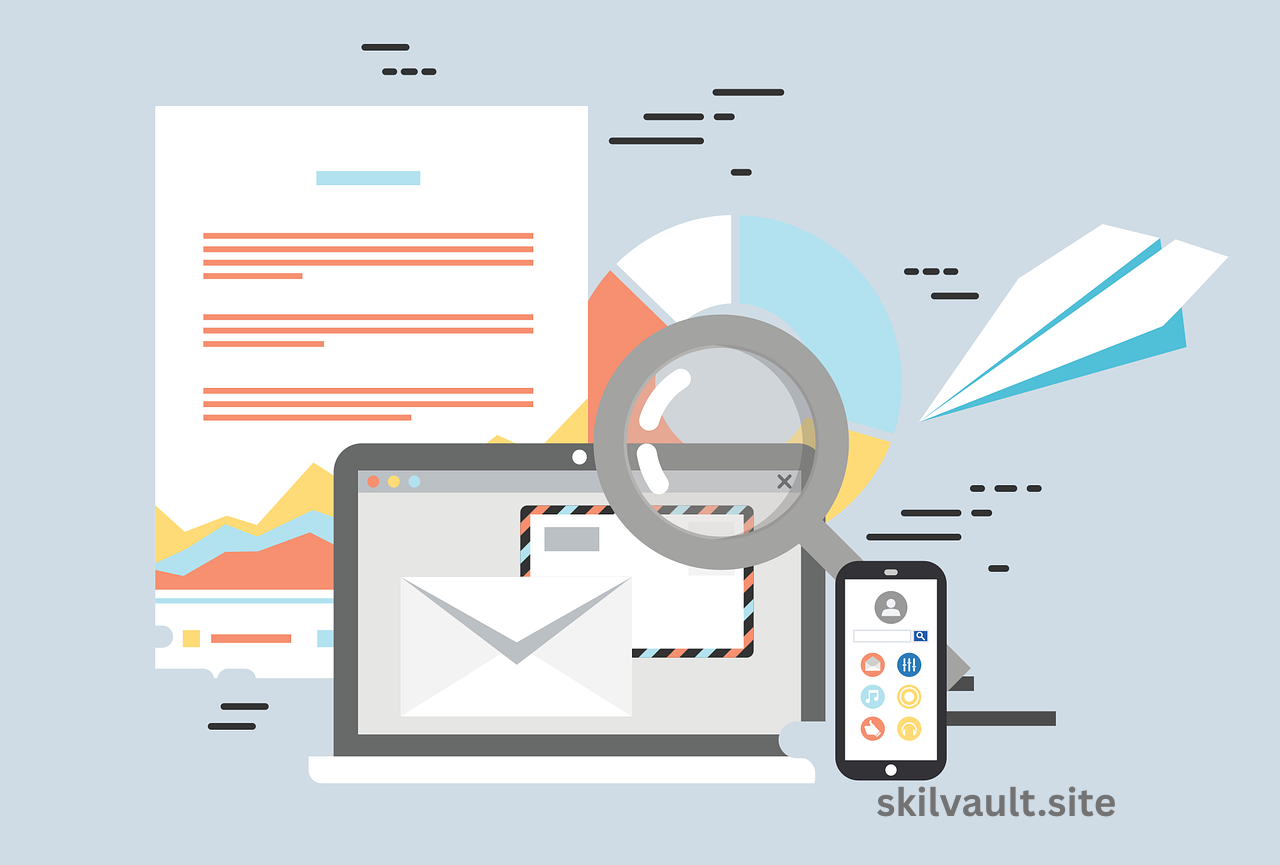Email marketing refers to the practice of sending mass communications to a specified audience to increase awareness of a product, service, or brand. Any kind of business would benefit greatly from this product, as it has the ability to generate $42 for every $1 spent. However, you should be cognisant of its benefits and drawbacks before putting it to actual use. This course delves into the pros and cons of email marketing, aiming to improve your search engine optimisation (SEO) results for queries such as “Email marketing advantages and disadvantages.”

Emails provide a number of benefits.
Numerous companies start their audience-reaching efforts with email marketing due to its numerous benefits. Incorporating search engine optimisation strategies in the mix yields the following important advantages:
1. Financial Worth
Email marketing is among the most cost-effective advertising strategies. If you own a small business, you may reach thousands of clients without breaking the bank by using one of the many free or cheap choices offered by websites like MailChimp, SendinBlue, or Constant Contact. Since email marketing requires less design and distribution work than print campaigns or sponsored adverts, it might be the ideal choice for startups or firms with little resources.
To attract organic visitors from companies that are financially suffering, include phrases like “cost-effective email marketing” in the descriptions of your campaigns or social media postings.
2. It provides a profitable return on investment
When compared to other channels, such as PPC or social media, email marketing constantly outperforms and gives an incredible return on investment. Businesses may boost conversions, which can be defined as sales, sign-ups, or engagement, by targeting specific lists with personalised content. As an example, compared to other digital marketing tactics, a well-written email campaign has the potential to provide click-through rates (CTR) of 2-4 per cent.
After publishing case studies or return on investment (ROI) statistics on LinkedIn or Medium, use phrases such as “email marketing benefits” to make them more searchable.
3. Discipline and Independence
Segmenting your audience based on their demographics, activity, or interests allows you to develop highly personalised campaigns using email marketing solutions. An increase of up to 26% in opening rates is possible with personalised emails that include the recipient’s name or provide product recommendations based on their past purchases. This degree of customisation leads to stronger relationships with customers and continued commitment.
Make “personalised email marketing strategies”-related blog posts or social media posts to boost your search engine rankings for targeted keywords and drive more visitors to your signup pages.
4. Clear and concise communication
Email marketing bypasses social media’s algorithmic access restrictions and sends your material straight to people’s inboxes. By cutting out middlemen, your target market will be able to purchase your items straight from you. You can tailor your communications to specific target populations to ensure relevance and boost interaction.
Improve the discoverability of your email calls to action and associated material by optimising them with keywords, such as “targeted email campaigns,” before sharing them on other channels.
5. The results are obviously excellent
Email marketing systems provide comprehensive data, including open rates, click-through rates, bounce rates, and conversions. To assess the efficacy of campaigns and refine strategies, these criteria could be useful. Subjects or transmit timings that undergo A/B testing, for instance, guarantee continuous improvement and aid in optimising efficiency.
To increase organic traffic, you should publish advice on “tracking email marketing success” on forums or guest blogs using relevant keywords.
6. Automating capabilities
Automation technologies enable you to send timely and relevant emails without any manual effort. You can encourage members to engage on significant occasions through automated greeting sequences, birthday bonuses, and abandoned cart reminders. Automation increases customer satisfaction and saves time even when constant contact is maintained.
Make content for third-party websites or social media sites that perform well for “email marketing automation benefits” keywords connected to automation.
7. The ability to expand
Having 100,000 or 100,000 subscribers has little effect on the growth of email marketing. Platforms excel at managing large lists, enabling campaigns to adapt to expanding audiences without incurring significant costs.
To reach businesses looking for solutions to help them expand, include phrases like “scalable email marketing” in your ads.

Downsides of electronic mail advertising
Email marketing has several benefits, but it also has certain downsides that might make it less effective. To create a comprehensive strategy, it is essential to be aware of these constraints.
1.Issues related to spam and deliverability
One of the trickiest things to do is to avoid having emails go to the spam folder. Issues with subscriber authorisation, promotional language misuse, or low-quality lists might trigger spam filters. Because up to 20% of emails could not reach their intended recipients’ inboxes, campaigns are less successful, says an industry study.
Share blog posts or social media posts on “avoidance of spam filters in email marketing” that tackle deliverability issues and make use of keywords to entice readers.
2. Members’ Slowness
Poor engagement or unsubscribes could result from customers becoming tired of receiving irrelevant or too many emails. Researchers discovered that 69% of recipients unsubscribe from emails they perceive as excessively frequent. Finding the sweet spot between frequency and value is essential for list maintenance.
Use search terms like “email marketing subscriber retention” to enhance information for queries connected to audience engagement.
3. Financial and Time-Expending Efforts
Despite the low cost of email marketing, it does need some work to create design templates, interesting content, and track results. Funding consistent campaigns may be challenging for small businesses or solopreneurs, especially those without a full-time marketing department.
Attract small business owners seeking fast recommendations by posting “time-saving email marketing tips” guidelines.
4. Compliance-Related Worries
When it comes to email marketing, strict rules like the CAN-SPAM Act in the US and GDPR in Europe are in charge. Noncompliance, defined as lacking the necessary authorisation or displaying an unsubscribed option, may result in fines or reputational harm. For those looking in from the outside, navigating these limitations could be a real pain.
Improve the visibility of “email marketing compliance” material so that businesses seeking regulatory advice may find it easily.
5. Website-Required Power is limited
Lead generation might be hindered without a website or landing page, even if email marketing could still be done without one. Relying only on social media or other sources for registration might restrict your ability to receive emails properly.
Use search terms such as “email marketing without a website” to enhance your social media posts and profiles and draw in people seeking this approach.
6. Contradiction and Resonance
It is challenging to avoid overflowing inboxes due to the daily transmission of billions of emails. Customers may choose to disregard or discard emails, especially if competitors provide similar content. To maintain engagement, it is crucial to create emails that are both original and helpful.
Use keywords to make your discussion on “standing out in email marketing” more discoverable on Quora and other websites.
Strategies to Enhance SEO-Based Email Marketing
By integrating search engine optimisation (SEO) tactics, you may maximise the impact of your email marketing campaigns:
Use search terms like “email marketing advantages and disadvantages” to repurpose your email content for use on blogs, social media, or forums; this will help you attract more readers.
If you work with bloggers in your field, you may boost your domain authority by promoting your social networking pages and email signup forms via their connections.
Hashtags like #EmailMarketing and #DigitalMarketingTips may help you attract more naturally occurring visits.
Use geography-based keywords in calls to action and company profiles for local businesses, such as “Email marketing services in [City]”.
Top Strategies for Minimizing Effects
Taking use of email marketing’s many benefits in order to address issues:
You may improve engagement and delivery consistency by removing inactive subscribers from your list.
Subject lines, content, and send time may all be enhanced via A/B testing.
Prioritise providing valuable content such as engaging stories, unique sales opportunities, or practical advice.
To stay in compliance with the law, you need unsubscribe options and clear contact details.
Keep your writing flowing so that it captivates the reader without becoming annoying.
Conclusion
With email marketing, you can contact your audience in a scalable, cost-effective, and personalized way that produces measurable results and a high ROI. The persistence of spam filters, subscriber apathy, and the need for meticulous planning to meet compliance regulations are all ongoing concerns. Campaigns that engage your target audience and perform well in search results may be developed with the aid of SEO techniques and an understanding of the pros and cons of email marketing. Email marketing is a versatile tool for increasing engagement and growth for any organization, no matter how big or little.
